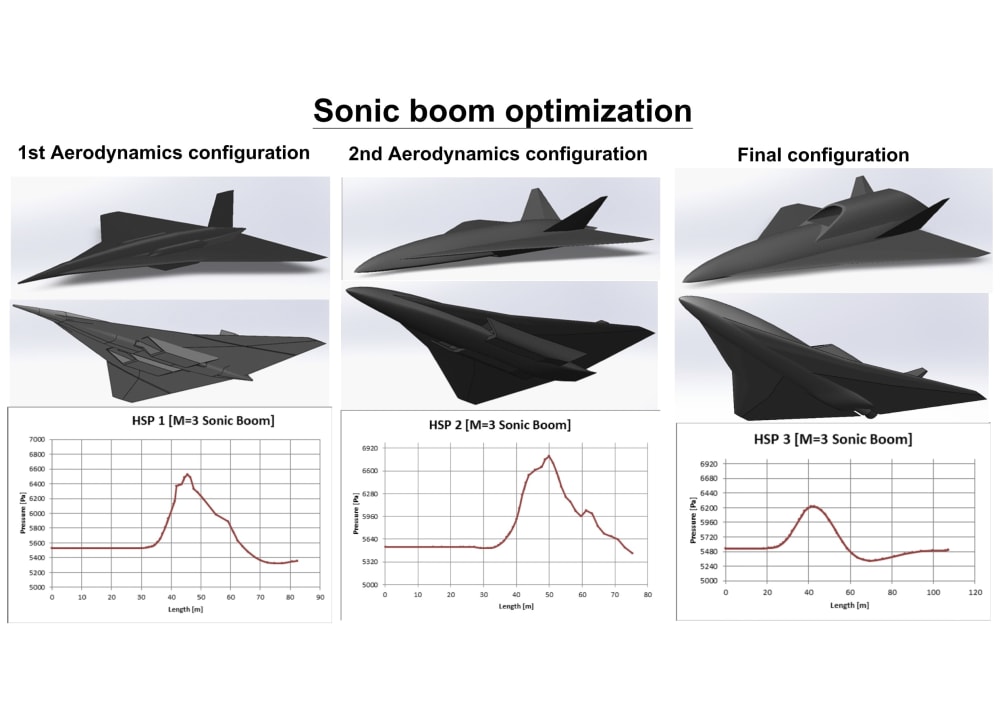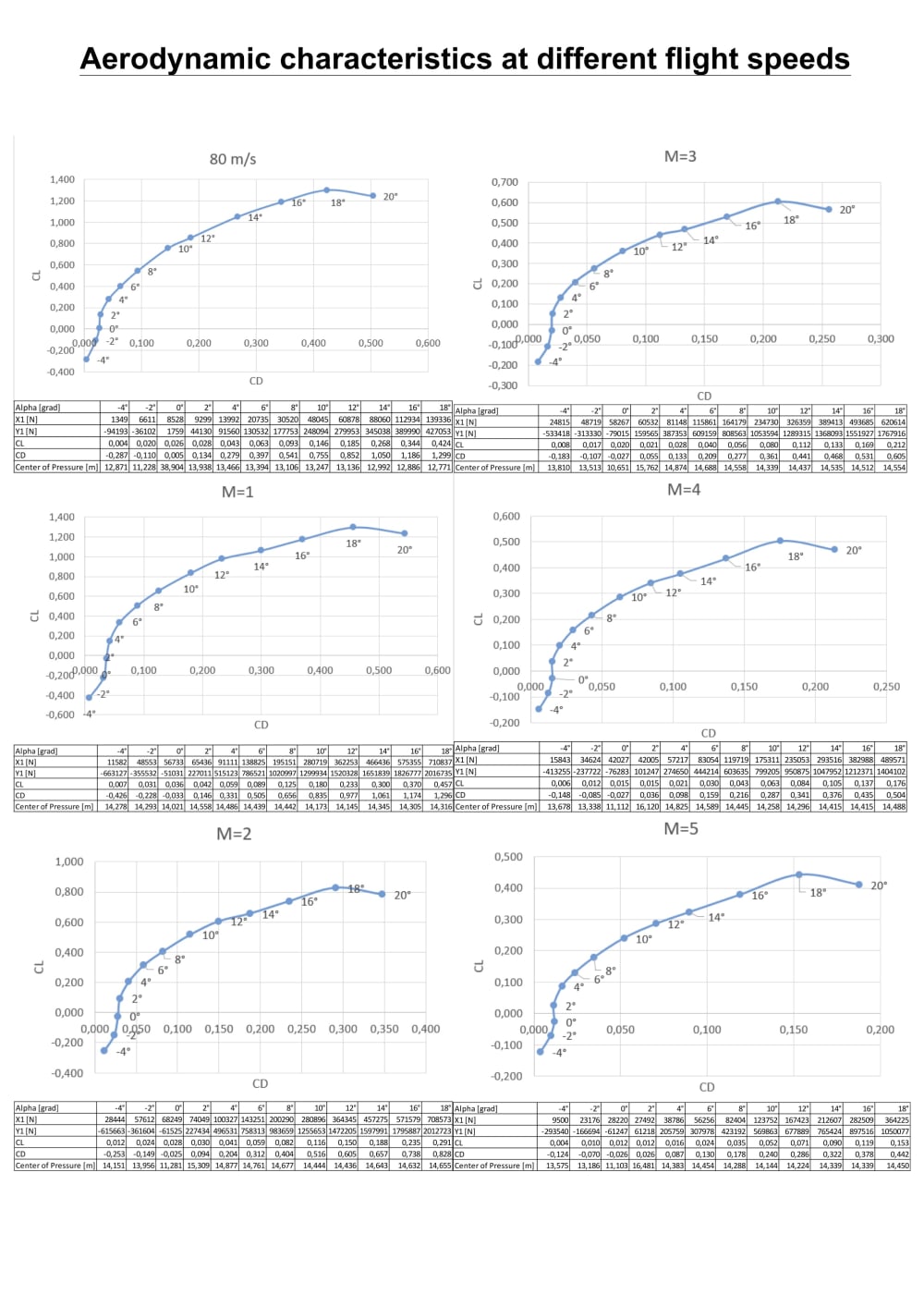The main goal of the developed Hypersonic UAV (HUAV) will be its use as a test platform for studying such a layout and the subsequent creation of a multifunctional cargo vehicle or a booster aircraft for a spacecraft. Multifunctionality refers to the use of interchangeable modules in the center of the fuselage to ensure the following tasks:
- Cargo or pressurized cabin - for small loads or a small number of passengers.
- Instrument compartment - placement of equipment for research and photographing the area (search and reconnaissance).
- Compartment for installation of ultralight launch vehicle.
In this project, the HUAV is considered as an unmanned aerial vehicle with a length of up to 20 m.
The following parameters are set as initial data for preliminary design:
- Flight speed – 1.5 km/s
- Service ceiling – 30 km
- Range – 6000 km
- Payload weight – 2500 kg
The choice of a service ceiling of 30 km is due to the fact that at this altitude the air is more rarefied, in connection with which air resistance and thermal heating of the hull skin will be reduced.
The flight range of 6000 km is necessary for the HUAV to enter the launch zone, or to perform research and cargo tasks.
Payload types:
- pressurized cargo or passenger compartment - for the quick transportation of small loads or 4 passengers. It is proposed to use an ejection capsule in case of emergency.
- Instrument compartment - in this compartment it is proposed to place research or photographic equipment for studying the earth surface. This compartment can become a "flying laboratory", like the Tu-144 or SR-71.
- Ultra-light launch vehicle + spacecraft is a promising goal of using this HUAV. Every year, due to the development of technologies, there is a decrease in the mass of spacecraft, so there is no need for huge launch vehicles for light spacecrafts. Small companies and research universities will be able to afford to conduct their own research at relatively low cost.
HUAV is proposed to be based and launched from ground airfields. In the future, it is possible to consider take-off from an aircraft carrier.
The advantages of using the HUAV to accelerate the launch vehicle are:
- No need to have a Launch Vehicle with thrust-to-weight ratio greater than 1
- The launch vehicle already has an initial 1.5 km/s and is at an altitude of 30 km at launch.
- Launch of the launch vehicle into orbit with any inclination.
- Reusability of HUAV as a booster.
The disadvantage is the overall complexity, undeveloped and difficult to implement such a system.
CFD was used to select the aerodynamic layout, taking into account the reduction of sonic boom. Three layouts were compared in order to choose the most optimal one. In zones with the greatest heating it is proposed to use regenerative cooling by circulating on-board fuel there. It will also be necessary to cool the bleed air for the pneumatic/hydraulic systems.
Like this entry?
-
About the Entrant
- Name:Islambek Jamakeyev
- Type of entry:individual
- Software used for this entry:SolidWorks
- Patent status:none








